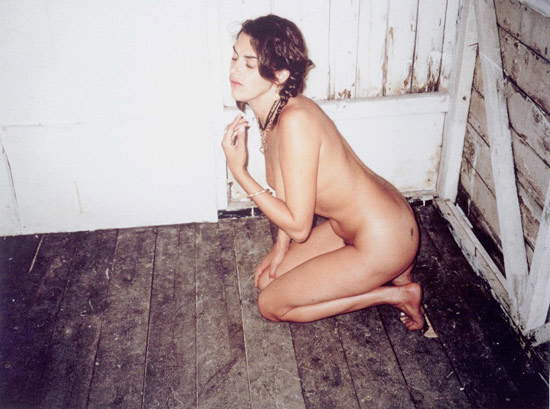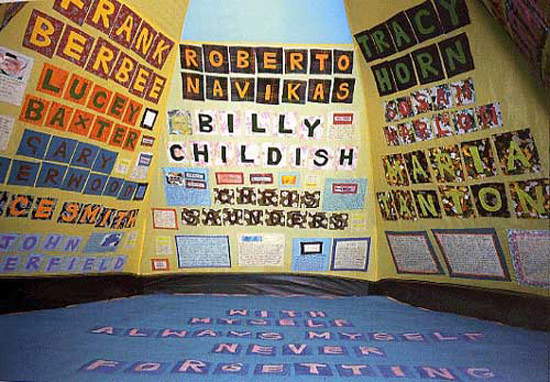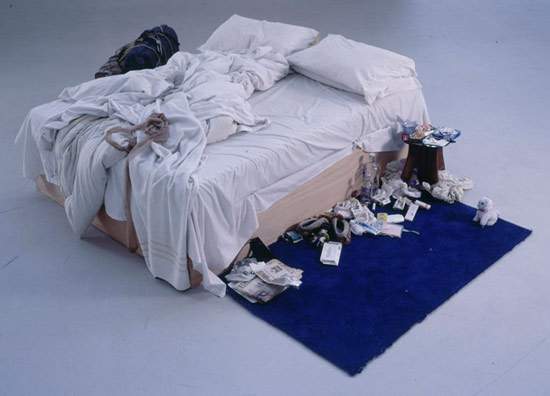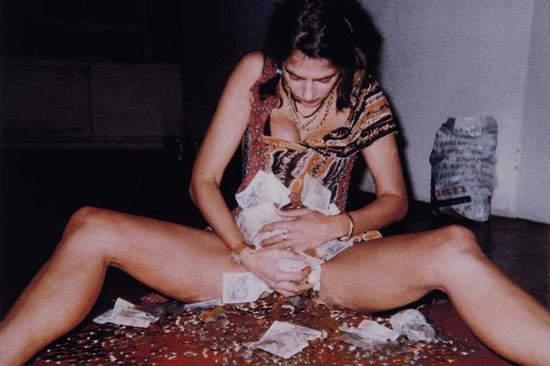Are you familiar with contemporary artist Tracey Emin? If not, read this Cultura Colectiva article written by Julieta Sanguino and translated by our Ilaria. Then tell us what you think ;)
His work consisted of a camping tent full of names. All the people the artist slept with at least once appeared in the small tent. Thus included were two children lost during pregnancy, her twin brother, all her sex partners or family members with whom she had sometimes spent the night. Obviously the title of the work predisposed the viewer to excitement, but in reality the artist endowed her work with a much deeper and more intimate meaning.
 |
| Tracey Emin, The last thing I said to you was don’t leave me there I (2000; digital print on paper, 80.5 x 109.5 cm; various locations) |
Titled Everyone I Have Ever Slept With 1963 1995 or My Tent, it is considered an opinion-inducing work in contemporary art and has become iconic. Inside it appeared 102 names of people who had slept with her until 1995, and of course the title was very often misinterpreted as sexual connotations were attributed to it. Inside the camping tent were the names of the people with whom I had shared a bed or a wall. In other cases it was just people with whom I had curled up to sleep for a few hours, like my grandmother. I usually lay in her bed and held her hand. We would listen to the radio together until we fell asleep. Don’t do it with those you don’t love or care about.
Friends, family members, drinking buddies and lovers, all present in a small space that seemed to mean more than what we could superficially see. One of her boyfriends, artist Billy Childish, occupies one of the most important spaces in the tent: in fact, the center of it reads With you, always with you, never forgetting.
 |
| Tracey Emin, Everyone I slept with 1963-1995 (1995; tent with decorations, mattress and lights, 122 x 245 x 214 cm; formerly London, Momart, destroyed in 2004) |
 |
| Tracey Emin, Everyone I slept with 1963-1995, detail |
The artist made this work when she was in a relationship with Carl Freedman. The latter was later the curator of the group exhibition Minky Manky at the South London Gallery, and the tent became the main attraction of the exhibition. In the newspapers the most popular headline was She slept with everyone, even the curator. Charles Saatchi, a leading art collector, bought the work, but in 2004 a fire in the Momart warehouse in London destroyed it: the artist refused to make it again.
Tracey Emin has been repudiated by contemporary art circles for her ridiculous and absurd work, which always stems from the intimacy of her personal life and invades the most remarkable artistic boundaries. In fact, one of her best-known works, titled My Bed, simply consists of an unmade bed with everyday objects around it, such as condoms and tampons. The work won the Turner Prize and sold for more than 150,000 pounds.
 |
| Tracey Emin, My bed (1998; mattress, sheets, pillows and various objects, 79 x 211 x 234 cm; Private collection) |
Like My Bed, Everyone I Have Ever Slept With 1963 1995 is one of her seminal works and the artist considers it a fantastic and wonderful artwork. When the fire invaded the Momart, the tabloids criticized Emin’s behavior: It’s strange to hear of irreparable loss...but really? Surely one would think that many of these works could be remade. It would not be very difficult for Tracey Emin to rewrite the names of all the people she slept with in the small camping tent, although it would certainly have to be updated starting in 1995. However, Tracey stated that the inspiration, which is always personal, came to her ten years earlier and that it was therefore impossible to recreate the emotion.
Emin grew up in the worst possible environment. She spent her first few months of life in an incubator with her twin brother and, when the time came, they left only to spend their childhood in a boarding house shared with squatters. She had relations with her twin, was raped at thirteen, suffered two abortions, but was rewarded in the art world. She fed only on fried chicken and vodka. Always inspired by the works of Edvard Munch and Egon Schiele, Tracey Emin distinguished herself in her teens as an artist addicted to drugs, alcohol, and art.
 |
| Tracey Emin, I’ve Got It All (2000; print on paper, 124 x 109 cm; various locations) |
With famous artists such as Damien Hirst, the Chapman brothers and Chris Ofili in particular, she was considered one of the greatest promises of British art. Tracey Emin showed her personal life in drawings, photographs, videos and installations to investigate her rejected, devastated and hopeless interiority. Another of her works, Love is what you want, is a lettering installation illuminated by neon lights.
How to gain fame with excerpts of life that seem destined for the trash? The exponents of this generation that tried to push the boundaries of art are still not given the status of artist as is the case with the great authors; however, it is this very rebellion that generates a dialogue with the viewers. It is precisely the fact that it makes viewers feel visceral emotions, never experienced with any other work, the Holy Grail of contemporary art. There is nothing more to be said, the beautiful has already been depicted, the irreverent has been the purpose of the Dadaists...a dialogue that sustains communication with the viewer to the point of making him sob, get angry, or make his skin crawl is the purpose of today’s artist: that is what Tracey Emin tries to do. Art and sex often come together in her artworks. Such as in the case of Cheng Li, the artist who had sex in public and was arrested or Milo Moiré’s performances in which she shows herself completely naked. |
| Tracey Emin, Love is what you want (2011; neon lights, 133 x 149 cm; Private collection) |
Warning: the translation into English of the original Italian article was created using automatic tools. We undertake to review all articles, but we do not guarantee the total absence of inaccuracies in the translation due to the program. You can find the original by clicking on the ITA button. If you find any mistake,please contact us.